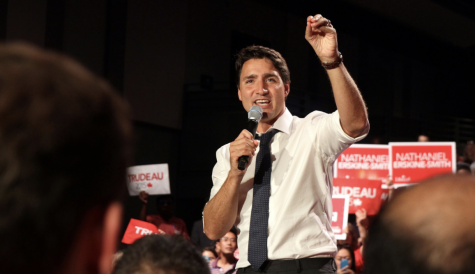Canada Holds a General Election…and Nothing Has Changed
October 8, 2021

September 20, 2021, Canadians across the country went to the polls and mailed in their ballots for the election of Canada’s 44th parliament. This election wasn’t an expected one, the last general election being only in 2019, but was instead called for directly by Prime Minister Justin Trudeau who, by way of the Canadian governor-general, has the right to dissolve Parliament and call for a new election to be held. The very calling of this election itself was considered by many a rather controversial move. Throughout the campaign, Trudeau struggled to give a good answer for why new elections were necessary. Generally, new elections are called for only in response to grievous scandals, new pressing issues, or because the current parliament isn’t working – however, the 43rd Parliament had none of these issues. This demand for a new election by the Prime Minister gave rise to claims that he was capitalizing on the government’s poor performance operating in the pandemic to try and secure a Parliamentary majority. Trudeau’s party, the Liberals, held 155 seats in Parliament at the time, with 170 seats constituting a majority. This election also proved the most expensive in Canada’s history, costing a total of 600 million Canadian dollars (or about $470 million U.S. currency).
Despite all the controversy surrounding the election, it ended up returning a Parliament that looks strikingly similar to the one that was dissolved. The Liberals are still the largest party in Parliament, gaining two seats but still without a majority. Conservatives, the second largest party and main opposition, lost two seats. The Green party lost one seat, ending with 119 seats and two gains respectively. The French nationalist party, Bloc Québécois, and the left-wing New Democratic party gained one seat each, totaling 33 and 25 new seats respectively. The People’s Party of Canada (PPC), a nationalist, libertarian anti-immigration party founded by disgruntled former Conservative member of Parliamentand failed Conservative party leader candidate Maxime Bernier, did not win any seats in Parliament, but saw his vote count more than double to 5 percent compared to in 2019, despite not being invited to any televised debates. Canada uses a first-past-the-post system of voting in regional elections, which is why the Liberals remain on top despite the Conservatives winning the popular vote with 33.7 percent to the Liberals 32.6 percent. That system also explains how the Green party secured two seats with 2.3 percent of the vote while the People’s Party secured none with 5 percent. Conservative party leader Erin O’Toole, who pushed to make the Conservatives a more centrist political party in order to broaden the party’s appeal, had his party polling better than Trudeau’s for most of the campaign season. O’Toole told the Associated Press, “Canadians sent him back with another minority at a cost of 600 million dollars and deeper divisions in our great country.”
This election secured little else for Trudeau aside from another four years in power; given how poorly received this election was, it’s unlikely Trudeau will call for another one until he has to in 2025. The majority the Liberals were seeking was denied to them, and the election itself was seen as a mercenary power grab that weakened the moral ground for the Liberals. Conservative party leader Erin O’Toole is likely to be ousted from power, as is Canadian tradition for major party leaders who fail to secure a victory. The Bloc Québécois and New Democratic Party will see almost no changes whatsoever from this election. The Green party continues to struggle as its new leader Annamie Paul failed to win back her seat. The People’s Party is growing in appeal, but is still unable to break into the world of mainstream Canadian politics. This election proved inconsequential in terms of actual governance, but with the Trudeau image faltering and the PPC growing in vote count, all eyes should be on 2025.
